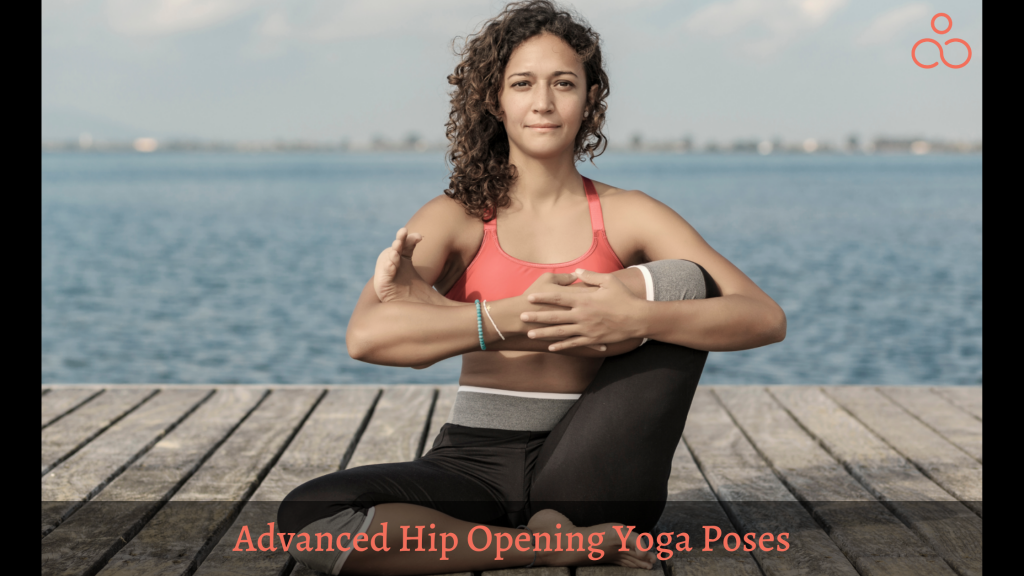Hips are one of the important and complex parts of the body. They help to define posture and balance of the body. Tight hips cause the lower back to tighten too. This is because the psoas is tight. Psoas is the long muscle between the lumbar spine and the femur through the pelvis. The tension in the lower back causes the psoas to shorten and a swayback can be noticed in the body. This adds difficulty to everyday tasks like sitting, standing, walking, and exercising. This will cause the hamstrings to overcompensate and that may make way for knee pains.Hips are also regarded as the seat of individuality and sexuality. This is because the root chakra at the pelvis is the energy center for creativity, pleasure, sensuality, and freedom of expression. Balancing this helps to connect to others and the self and facilitates emotional well-being.
Hips may feel tight from sitting a lot, intense running, or due to age and genetics. It is important to loosen them and sustain the movement.
Misalignment due to tight hips is more common than it is talked about. If you are also struggling with the same, we have a solution for you. Yoga has gained immense popularity over the centuries. It contains hip-opening yoga poses that are a great way to reduce back pain, realign the spine, and improve blood circulation. Research shows that these poses also help to improve performance in sports and other day-to-day physical activities.
This article will help you with hip-opening yoga poses. You can choose among them based on your comfort. If you are new to hip-opening yoga, it may take time for you to get comfortable with the moves. Take it slow and build up your strength and stamina for the poses. Do not push yourself beyond your comfort, as it may lead to injury. It is also important to perform warm-up stretches before transitioning to the advanced moves.
Below are the hip-opening yoga poses that can help you to tackle tight hips and related issues
Child’s Pose (Balasana)

The child’s pose is one of the beginner hip-opening yoga poses that help to stretch ankles, hips, thighs, and back. It also helps to improve blood circulation. Start in a kneeling position with the toes next to each other. Now open the knees and lie down, placing your arms above the head. The child’s pose can ease the transition to the more advanced hip-opening yoga poses.
Butterfly Pose aka Bound Angle Pose (Baddha Konasana)
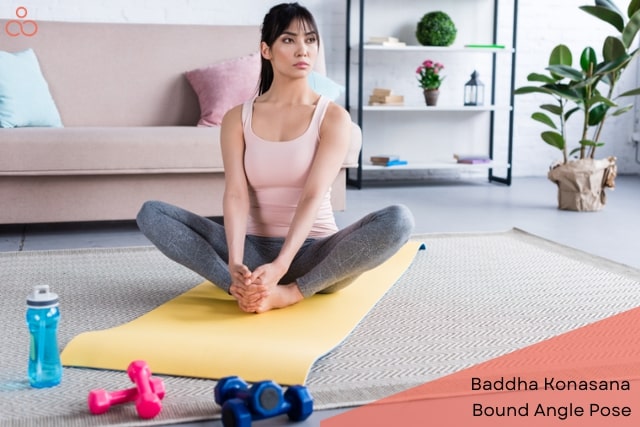
The butterfly pose can help to relieve the tension in the lower back, hips, and thighs. This can also help with stress relief so you feel in sync with your body.
To strike the pose, sit down on a flat surface with your heels next to each other. Now, pull your legs closer to your body and either lean over your legs as in the Child’s pose or sit up straight.
Horse Pose (Vatayanasana)
The horse pose can be performed right after the warm-up regimen is complete. Stand with the maximum possible distance between the legs and squat until the knees are at 90 degrees. Now, stand on your toes and let your arms hover over your knees.
The difficulty will increase as you squat further. Be mindful of your limit and do not push beyond your limit. In case you feel any sort of discomfort or pain, stop going down further and rise to a level that is more comfortable.
Side Lunge (Skandasana)
The side lunge is a hip-opening yoga pose that can help to improve your balance, flexibility, and core strength. It can also help to lengthen hamstrings.
Once you are in the horse pose, shift the body weight closer to the right leg and replace the left foot slowly with your left heel. Improve your balance by squeezing your palms together in front of your breastbone. Hold the pose for a few minutes and switch to the opposite side of the body.
Garland Pose (Malasana)
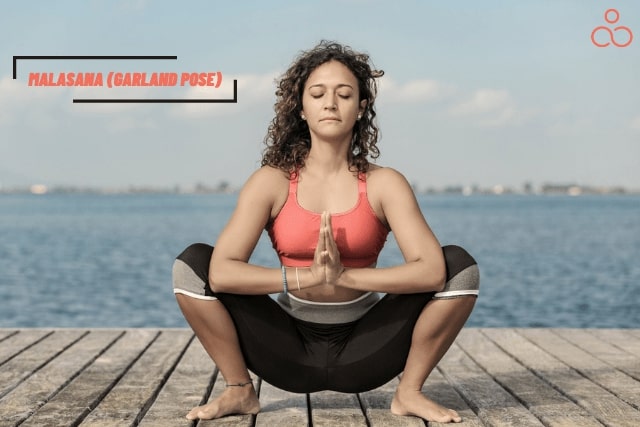
Garland pose is the next in sequence. It helps to stretch your back, ankles, and hamstrings. Using this pose, you can maintain your joint health. The pose is also safe and beneficial for pregnant women. Stand with a distance of more than shoulder width between your legs. Now squat down slowly till the hips are near the ankles. Sit up straight and press your palms together.
Lizard Pose (Utthan Pristhasana)
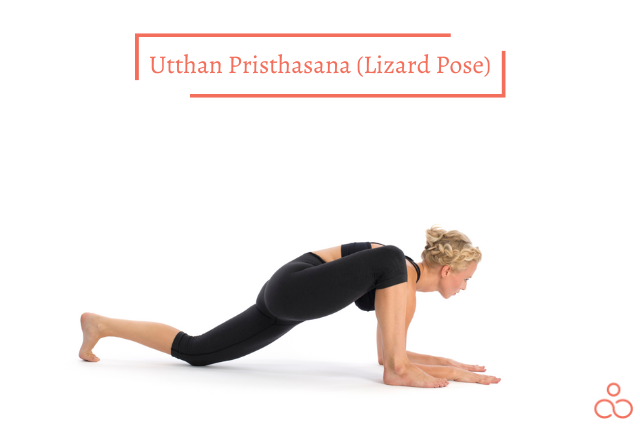
The lizard pose helps to stretch hips, hamstrings, and quadriceps. Strengthening these muscles can help to maintain a full range of motion. Start in a standing position and take one step backwards. From this position, drop the back knee and keep the leg in front at 90 degrees. Now lean over to the side and rest your upper body on your forearms.
Twisted Monkey Pose
To strike the twisted monkey pose, begin with the lizard pose. Bring the back knee up and prop it on the floor. Bend it in a way that the toes point up. Hold the foot by taking the closest hand back. Rotate the chest up towards the ceiling.
Low Lunge Pose (Anjaneyasana)
The low lunge pose allows the hips, hamstring, and quads to stretch. The entire body gets strengthened in the process.
Stand and take a large step back. Get into a lunge by bending both knees. Now let the back leg drop to the ground and push the top of the foot onto the yoga mat. Your body weight should be centered between the legs. Arch the back slightly and raise your arms slowly.
Half Pigeon Pose (Ardha Kapotasana)
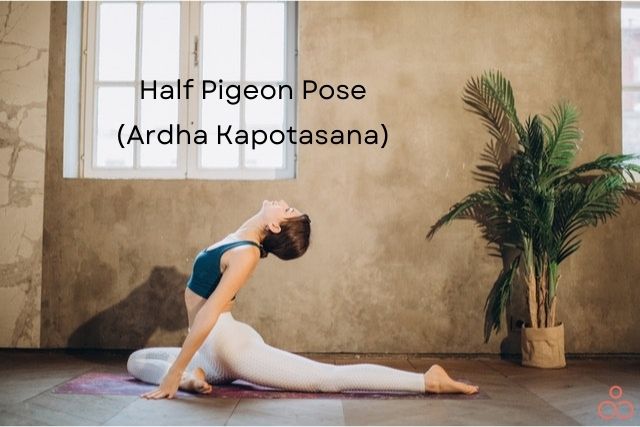
This is a multi-benefit pose that helps to open the chest, improves flexibility and stretches the lower body. It also helps to stimulate the endocrine and nervous systems. Start in the butterfly pose, take one leg and extend it behind you. Arch your back slightly and try to straighten the back as much as possible. Once you master the pose, you can also transition to the flying pigeon pose.
King Pigeon Pose (Eka Pada Rajakapotasana)
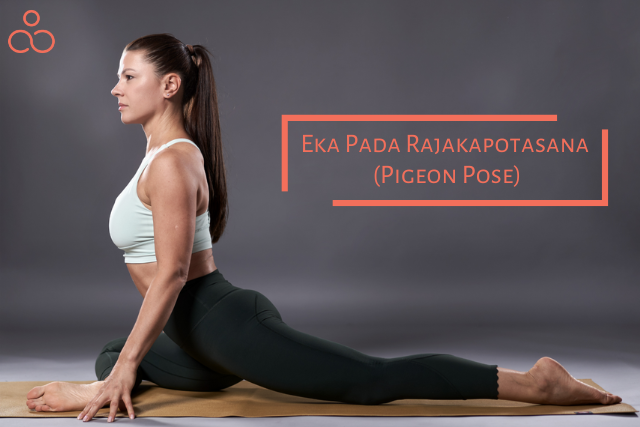
Here is a great pose to stretch the hip flexors and the other muscles that are used every day. It also helps to tone abdominal muscles. The pose is similar to the half pigeon pose, but you must bend the back knee up slowly and hold it using the closest arm.
Three-Legged Downward-Facing Dog Pose (Tri Pada Adho Mukha Svanasana)

This pose offers a deep stretch to the hips and helps to strengthen abdominal muscles.
Sit down with palms flat on the ground. The distance between the palms should be similar to the shoulder width. The next step is to place the feet flat on the floor and raise the hips. This position is called the downward dog. Raise one of the legs straight up in the air to transition from the downward dog to the three-legged downward-facing dog. Ensure that the raised leg and back make a straight line. Hold the pose as long as you can with each leg for an optimal stretch.
Wide-Legged Forward Fold (Prasarita Padottanasana)
This hip-opening yoga pose helps to eliminate back pain, ease out the tension in the spine and lengthens it. It also stretches the thighs, shoulders and hips well.
Start with your feet placed wide apart. Clasp the hands behind the back and slowly lean down at the waist. Maintain the back in a straight line.
Bridge Pose (Setu Bandha Sarvangasana)
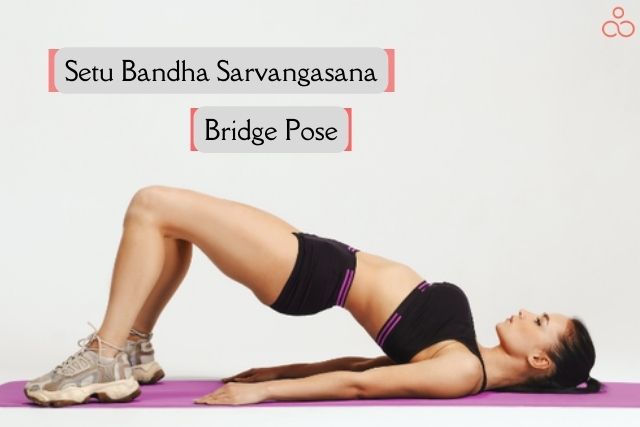
The bridge pose is a great way to stretch and strengthen back muscles. This helps to reduce pain and inflammation. It also stretches the neck, spine and chest and improves mobility and flexibility throughout the day.
Lie flat on the ground with your arms at your side. Keep the feet on the floor and raise the hips. Keep the shoulders on the floor. The body will be in a diagonal line.
Wide-Angle Seated Forward Fold (Upavistha Konasana)
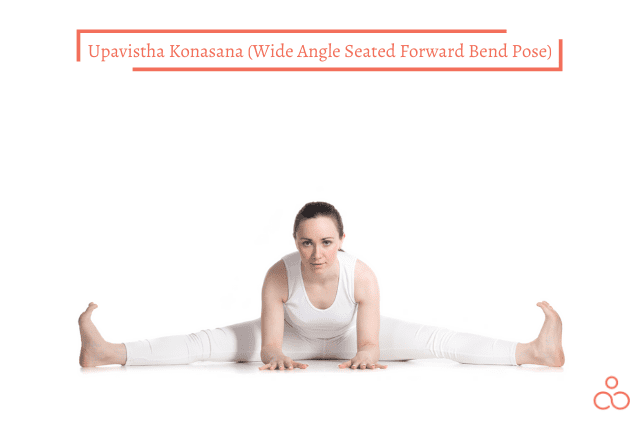
This is an entire body stretch that benefits many parts other than the hips. This includes shoulders, arms, legs, and spine.
Spread your legs at a wide angle and sit down on the floor. Place the hands on the thighs, lean down, and take your hands down to the ankles. Go only as far as you are comfortable and do not force yourself to go all the way down in the beginning.
Benefits of advanced hip opening Yoga poses
Since the hips connect the upper and lower body, they are important for all movements in the body. Here are the benefits of hip-opening yoga poses:
- They increase the range of motion
- They help to improve stability while walking, running or performing other tasks
- They help to undo the negatives of modern lifestyle issues such as long hours of sitting
- They help to increase flexibility in the body
- They improve blood circulation
- They increase the range of motion
- They help to alleviate back pains
FAQ’s
How to know if you have tight hips?
Different people observe tightness in hips differently. While some may not understand till they try to do the half-pigeon pose, others may have problems while walking, sitting or climbing the bed. Stiff hips can also shorten the stride and thus slow down your walks and runs.
To understand if your hips are tight, stand up and look at your feet. If the toes point outward instead of the front, the hip muscles are overworked and need stretching
Why should you do hip opener yoga?
Hip openers help to relax the hips and lower back and make other yoga poses possible. This makes them a crucial part of any yoga practice. Modern lifestyles involve spending extended periods sitting in chairs, cars and beds. This causes the hip muscles to tighten and lose flexibility. This can lead to issues such as spinal misalignment, lower back pain and long-term damage or injury. These poses help to access a wider range of motion and also increase stability and flexibility.
Important safety considerations for doing hip-opening yoga
While performing hip-opening yoga poses, you must take adequate care to protect your knees. The knee joint is a hinge joint. This means that it can only flex and extend and has a limited range of motion. The knee doesn’t have the capability to rotate. The rotation in any pose you perform will come from the hip because it is a ball and socket joint. While performing hip-opening yoga, pull the outside of the shins inside. This ensures that the hips rotate and the calf muscles are engaged. This protects the knees. Hip-opening yoga poses do not involve foot twisting. Doing so can put your knee at risk. Thus, ensure that you do not twist your ankle while performing hip-opening yoga poses.
Conclusion
Your hips determine your stability and movement; it is important to keep them in shape to stay active as you age. Hip-opening yoga poses can help to facilitate stability and flexibility in the hips.
While yoga is ideal for everyone, it takes time to learn the poses and get into the right posture. Taking it slow and stopping if you feel uncomfortable, is the key to a sustainable yoga practice.

